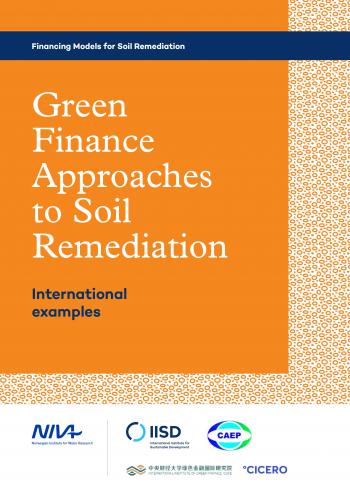Toxic soil cleanup too expensive for governments
New financial tools and sources must be harnessed to fund soil restoration and remediation projects to improve communities’ health, according to a new series of reports from a coalition of researchers from the International Institute for Sustainable Development (IISD), the Norwegian Institute of Water Research and the Chinese Academy of Environmental Planning (CAEP).
“When our soils are contaminated, they pose an immediate threat to our communities’ health and well-being,” says Oshani Perera, Director, Public Procurement and Infrastructure Finance, IISD, one of the authors of the reports. “Although governments want to help their communities, we often see these soil remediation projects costing far more than they can afford alone.”
Governments need to be aware of the financial vehicles available to attract investments for soil remediation projects. These funding opportunities not only remedy degraded lands, but provide adequate funding for greener forms of development, including green urban infrastructure, renewable energy, clean industrial technology, public transportation and more.
Soil contamination has become an urgent issue globally. In China alone, nearly 20 per cent of farmland is contaminated, posing a severe health risk, with remediation efforts expected to cost up to nine trillion Chinese Yuan, or nearly 1.72 trillion Canadian dollars, during the five years between 2016 and 2020. The government itself estimated it might be able to cover only a small fraction of the overall cost. The rest will have to come from private sources.
On August 31, top legislatures in China adopted the Soil Pollution Prevention and Control Law, proposing the establishment of earmarked funding to fight against soil pollutions. The law also establishes legal basis for issuing tax credits and developing innovative credit enhancement tools to encourage private investments into soil remediation projects.
“The funding challenge may seem daunting, but so are the public health consequences of not addressing soil contamination in our communities,” adds Perera. “The future stability of society, and the very legitimacy of our governments, is closely linked to addressing how to fund soil remediation projects to ensure the long-term health of our current and future generations.”
Governments around the world often rely on raising funds from private sources, leveraging capital markets or through public-private partnerships to fund soil remediation efforts. Financing Models for Soil Remediation, a series of new reports prepared by IISD and partners, highlights financing tools that blend public and private funding for environmental rehabilitation to identify policy, regulatory and institutional gaps. The report series includes more than 30 real-world case studies gathered from different parts of the world. The researchers hope that by presenting examples on how to resolve real environmental problems through innovative financing instruments, their efforts will take the green and sustainable investment movement to another level.
About IISD
The International Institute for Sustainable Development (IISD) is an award-winning independent think tank working to accelerate solutions for a stable climate, sustainable resource management, and fair economies. Our work inspires better decisions and sparks meaningful action to help people and the planet thrive. We shine a light on what can be achieved when governments, businesses, non-profits, and communities come together. IISD’s staff of more than 250 experts come from across the globe and from many disciplines. With offices in Winnipeg, Geneva, Ottawa, and Toronto, our work affects lives in nearly 100 countries.
You might also be interested in
Toward a Coherent, Transformative Approach to Financing Sustainable Development, Climate, and Nature
Four key proposals for the Fourth Financing for Development Conference (FfD4) to create an integrated, equitable approach to financing climate, nature, and development goals.
FfD4: How the Fourth Financing for Development Conference can strengthen finance for development, climate, and nature
As FfD4 approaches, Alexandra Readhead explores key issues and how the conference can reshape global financing for SDGs, climate, and biodiversity.
What Will Happen at COP 29?
Talks at the 2024 UN Climate Change Conference (COP 29) will range from defining a way forward on finance through a new collective quantified goal (NCQG) to mitigation, and loss and damage. Ahead of negotiations in Baku, IISD’s Earth Negotiations Bulletin Team Lead Jennifer Bansard examines the agenda and breaks down what to watch as eyes turn to Azerbaijan.
Addressing Liquidity Challenges: A conceptual framework
A conceptual framework for addressing liquidity challenges in sovereign debt.


